 |
A view of the Xequijel river, in Olintepeque, Quetzaltenango. Graham Hunt
Una Vista del Río Xequijel, en Olintepeque, Quetzaltenango. |
On February 20, 1524, Tecún Umán, last king of the K’iché nation, was killed in battle against the Spanish conquerors. 487 years later to the day, citizens of the municipality of Olintepeque, the site of Umán’s death, took a stand against what many see as a new invasion: the entry of transnational mining companies onto Guatemalan soil. To date, to the knowledge of community leaders, no mining exploration or extraction licenses have been granted within the municipality, and it was thus that on February 20, 2011, 14,848 men, women and children said “no” to mining in the Preventive Good Faith Community Referendum of the Municipality of Olintepeque. It was the 50th referendum held in Guatemala and the fourth to take place in the department of Quetzaltenango.
El 20 de febrero, 1524, Tecún Umán, último rey de la Nación K’iché, falleció en combate contra los conquistadores españoles. Exáctamente 487 años después, ciudadanos del municipio de Olintepeque, sitio de la muerte de Umán, se manifestaron en contra de lo que muchos han denominado una nueva invasión, la entrada de compañías mineras transnacionales a suelo guatemalteco. Hasta la fecha, hasta donde saben líderes comunitarios, no se ha otorgado ninguna licencia minera en el municipio, y fue así que el 20 de febrero del 2011 14 848 hombres, mujeres y niños dijeron “no” a la minería en la Consulta Comunitaria de Buena Fe Preventiva en el Municipio de Olintepeque. Fue la 50 consulta celebrada en Guatemala y la cuarta llevada a cabo en el departamento de Quetzaltenango.
 |
The banner reads “Support the referendum, say NO to mining on February 20.” Graham Hunt
La pancarta dice “Apoyemos la consulta, digamos NO a la minería el 20 de febrero.” |
 |
Volunteers working the voting table in Olintepeque’s urban center sing the national anthem before the opening of voting. Graham Hunt
Voluntarias trabajando en la mesa receptora de votos en el casco urbano de Olintepeque cantan el himno nacional antes de iniciadas las votaciones. |
 |
Young voters wait their turn in Olintepeque’s urban center. Graham Hunt
Votantes jóvenes esperan su turno en el casco urbano de Olintepeque. |
 |
A volunteer folds ballots before they are passed to voters, in order to maintain the secrecy of the vote. Each ballot was also stamped and signed on the back before arriving in the voters’ hands. Graham Hunt
Una voluntaria dobla las papeletas antes de entregárselas a los votantes, con el fin de mantener el voto secreto. También, cada papeleta fue sellada y firmada en la parte dorsal antes de llegar a manos del votante. |
 |
| Graham Hunt |
 |
Voters marked their ballots with crayons. Graham Hunt
Votantes marcaron su voto con crayones. |
 |
Young voters wait in line in Cantón La Libertad. Graham Hunt
Votantes jóvenes hacen cola en el Cantón La Libertad. |
 |
Local women served a traditional atol, or corn drink, flavored with chile and ginger. Cantón La Libertad. Graham Hunt
Mujeres lugareñas servían un atol tradicional, saborizado con chile y jengíbre. Cantón La Libertad. |
.
 |
Community members leave the school/voting center in the community of Las Cataratas. Graham Hunt
Comunitarios salen de la escuela/centro de votaciones en la communidad Las Cataratas. |
 |
Young voters cast their ballots in Cantón Chuisúc. Graham Hunt
Votantes jóvenes emiten su voto en Cantón Chuisúc. |
 |
A voting table in Cantón Pajoc. Graham Hunt
Una mesa receptora de votos en Cantón Pajoc. |
 |
| Graham Hunt |
 |
The voting center in San Isidro. Graham Hunt
El centro de votaciones en San Isidro. |
 |
| Graham Hunt |
 |
Coordinators of the referendum enter the voting center in the community of Centro de Olintepeque, in the outskirts of the urban center. Graham Hunt
Coordinadores de la consulta ingresan al centro de votaciones en la comunidad Centro de Olintepeque, en las afueras del casco urbano. |
 |
An observer speaks with community leaders in the community of Centro de Olintepeque. Graham Hunt
Un observador conversa con líderes comunitarios en la comunidad Centro de Olintepeque. |
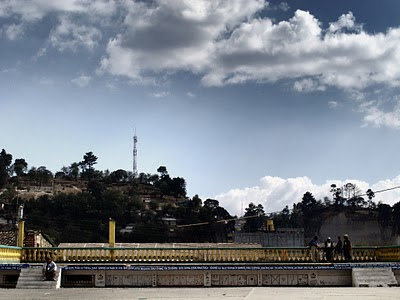 |
The plaza of the urban center of Olintepeque. Graham Hunt
La plaza del casco urbano de Olintepeque. |
 |
After voting, voters’ fingers were marked with permanent ink, preventing any attempt to vote more than once. Graham Hunt
Tras votar, los dedos de los votantes fueron marcados con tinta indeleble, previeniendo cualquier intento por votar más de una vez. |
 |
Community leaders in the community of La Cumbre pose with their varas, ceremonial staffs representing their authority. Second from left, the man holds a whip representing the same. Graham Hunt
Líderes comunitarios en la comunidad La Cumbre posan con sus varas, bastones ceremoniales que representan su autoridad. El hombre segundo de la izquierda sostiene un chicote representativo de lo mismo. |
 |
A view of the mountains from near the community of La Cumbre. Graham Hunt
Una vista de las montañas desde un sitio cercano a la comunidad de La Cumbre. |
 |
A community leader in the neighborhood of El Trigal. Graham Hunt
Un líder comunitario en la colonia El Trigal. |
 |
The community leader kept a count of the number of voters passed through the voting center throughout the day. Graham Hunt
El líder comunitario anotaba la fluencia de los votantes por el centro de votación a lo largo del día. |
 |
The counting of the votes begins in the community of Justo Rufino Barrios. Graham Hunt
Se da inicio al conteo de los votos en la comunidad de Justo Rufino Barrios. |
 |
| Graham Hunt |
 |
| Graham Hunt |
 |
| Graham Hunt |
 |
The celebration begins in the center of Olintepeque. Graham Hunt
Se da inicio a la celebración en el centro de Olintepeque. |
 |
The parish priest addresses the public. Graham Hunt
El Párroco imparte un mensaje al público. |
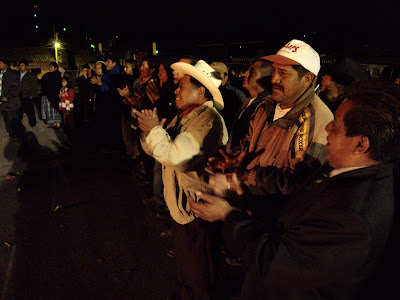 |
| Graham Hunt |
.































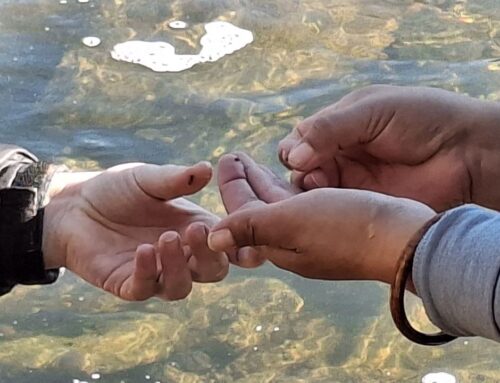
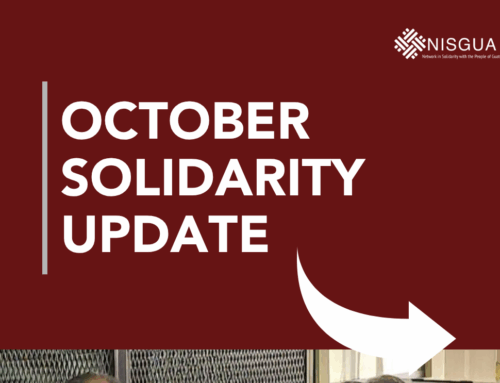
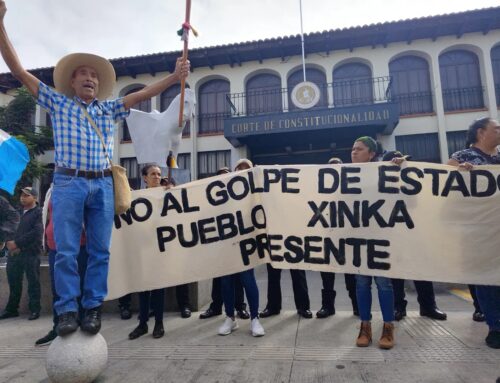
Leave A Comment